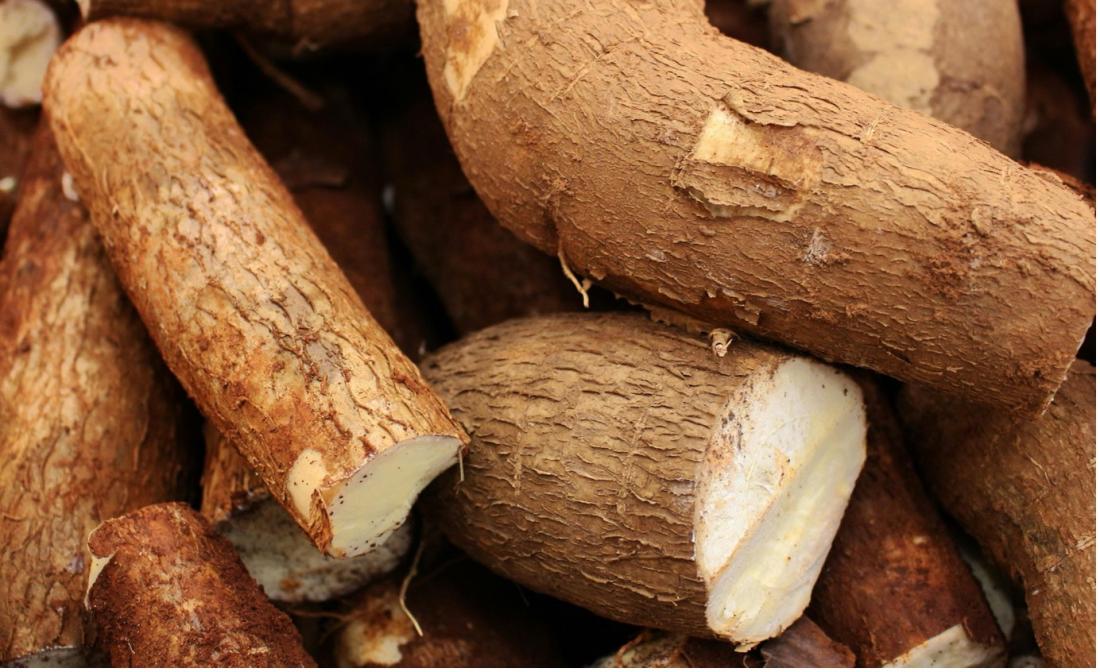Cassava and starch
Supported by the USDA and Winrock International, with sponsorships from Thai Wah and Larsson, and featuring Bosida and Sky Vision as exhibitors, the Starch Value Chain Asia conference drew over 100 participants from over 20 countries, including Laos, Vietnam, Thailand, Malaysia, Singapore, Indonesia, China, Japan, India, the USA, and the UK. The guest of honour was Director General, Dept of Agriculture Ministry of Agriculture and Forestry, Lao PDR.
The first day focused on high-level talks, while the second day included both technical discussions and an Elevator Pitch session on technology, followed by speed dating sessions connecting interested collaborators with speakers. The Elevator Pitch was set up with the support of the RAIN Project Thailand, also funded by USDA and implemented by Winrock International. The third day involved visits to the National Agriculture and Forestry Research Institute (NAFRI) and KT Agricultural Development Tapioca Processing Factory at KT Agricultural Development Co., Ltd to provide participants with a firsthand understanding of the real-world situation. For further up-to-date activities about NAFRI, see NAFRI facebook at https://www.facebook.com/LaoNAFRI/
During the conference, participants learned that cassava is Laos' third-largest crop export, primarily to China and Thailand. The new Laos-China high-speed rail was emphasized for reducing logistic costs in exporting to China. However, concerns were raised about cassava overtaking other crops like coffee, potatoes, and maize, potentially impacting the country's sustainable land use. There is also a need for Laos to continuously enhance its crop technology for competitiveness. The importance of not only the volume but also the quality of cassava for starch production and export was emphasized.
On these notes, Winrock International (a nonprofit organization whose mission is to increase economic opportunity, sustain natural resources, and protect the environment) which runs a USDA-funded project, CLEAN, in Lao PDR to facilitate linkages, set the scene for the cassava market landscape in Lao PDR. CLEAN highlighted the cassava value chain and how the production of cassava in Laos has increased due to the growing demand from global markets, particularly neighboring countries. Laos has become one of the top five global cassava exporters. There are bottlenecks to increasing growth, notably limited knowledge among farmers, deforestation, soil degradation, and declining fertility. Additionally, there is a lack of technology to increase yield, diseases, particularly through the use of stems from previous crops, and natural disasters, notably droughts and floods. However, there are silver linings, such as low labor costs, high yield per hectare, the Lao-China high-speed rail lowering logistic costs for exporting to China directly, policies allowing tax-free export of cassava to ASEAN and EU markets, local partnerships with foreign companies through foreign investment to open new markets, the introduction of new technology to support growth and sustainability, and added value at the factory level in Lao PDR.
Other conference highlights included discussions on regenerative agriculture in Thailand, Cambodia, and Vietnam, with opportunities for extension to Lao PDR. An important concern in cassava is diseases, notably cassava mosaic disease (caused by the cassava mosaic virus) and witches broom disease. The conference emphasized the challenges posed by diseases affecting cassava. Discussions also touched on the development of waxy and high-amylose cassava for industrial applications, provided insights into bioplastics and the starch market outlook, and considered China's corn market and bioethanol policy. Technical discussions during the conference centered around better starch nutrition through 'slowly digestible starch,' recycling of agricultural waste— notably pineapple stems— to produce starch that can be made into bioplastics for creating biodegradable food trays and opportunities for recycling agricultural waste in Lao PDR, and large-scale harvesting of energy for green manufacturing driven by biogas from starch production activities.
Key questions from the audience during the Elevator Pitch and speed dating session reflected a wide range of topics, including cost, business models, collaboration opportunities, revenue generation, environmental impact, and the approval process for various agricultural products.
On the third day, the field visit saw over 50 conference participants exploring the NAFRI, including pathogen labs, conservation efforts, and the ongoing study of witches broom disease. The Centre's focus on the climate-driven aspect of transboundary diseases and real-time diagnostics and capacity building for users in the region were highlighted, supported by funding from USAID, CATAS, and the Australian Government. Subsequently, the conference participants visited KT Agricultural Development Co., Ltd Tapioca factory, which has been in operation in Laos since 2021, for producing and exporting high-quality starch to China Mainland and Thailand.
The conference was organised by Centre for Management Technology (CMT) and chaired by Dr. Jonathan Newby, Research Economist, CIAT-in-Asia
A press release on this event has been published in Vientiane Times at https://www.vientianetimes.org.la/freefreenews/freecontent_49_Starch_y24....
A paper outlining potential opportunities for collaboration with key stakeholders in the starch value chain ecosystem in Lao PDR is currently in progress.
For more details on the conference discussion and the collaborative opportunity paper, please contact Dr. Kheng Lim Goh at [email protected]. Dr Goh, the author of this article, works for Newcastle University in Singapore. He is a Materials Technology expert who was invited to the conference to present the paper on recycling of pineapple stem wastes to produce starch that can be made into bioplastics for creating biodegradable food trays.
Take-home messages:
Cassava's Impact and Challenges: Cassava is Laos' major export, particularly to China, but there are concerns about its potential impact on other crops and the need for sustainable land use practices. Ongoing challenges include technological gaps, limited farmer knowledge, and environmental issues.
Laos as a Cassava Export Hub: Laos has risen as a top global cassava exporter. Impediments to further growth are deforestation and soil degradation. Key positive factors are low labor costs and strategic initiatives like the Lao-China high-speed rail.
Diverse Collaborative Opportunities: From regenerative agriculture to bioplastics and bioethanol policies to more pressing issues, notably disease management, environmental impact, and innovative technologies.



